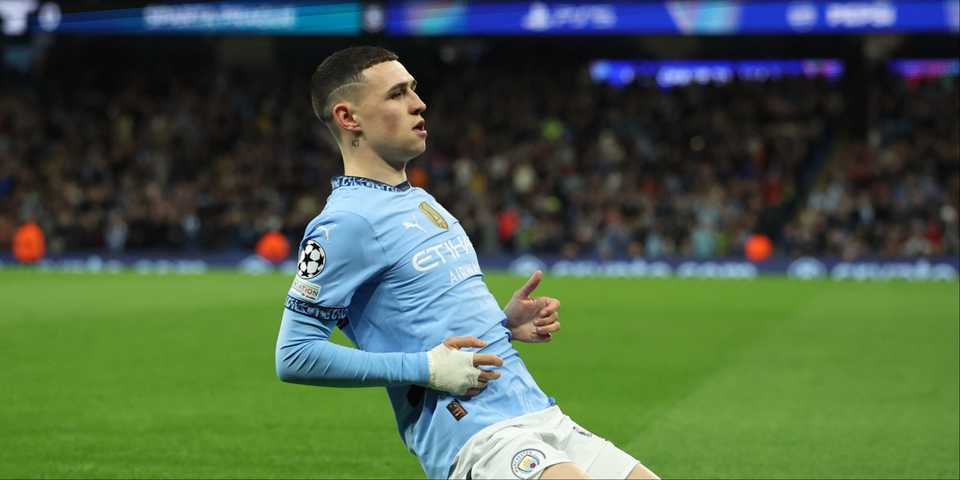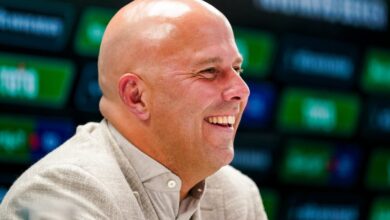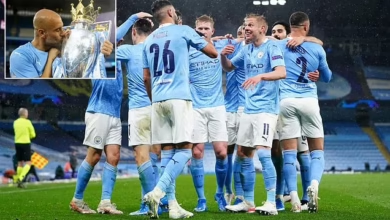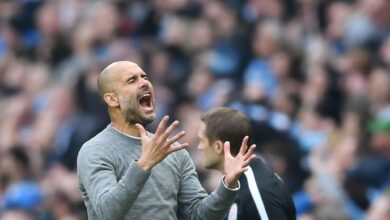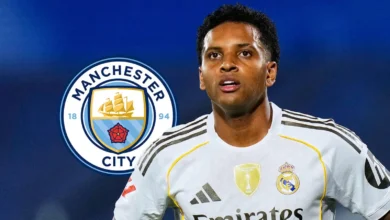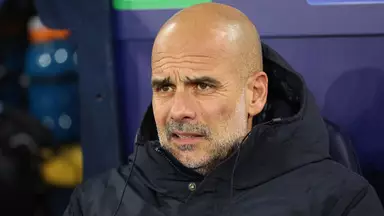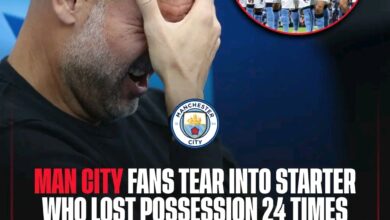Tottenham’s Ambitious Pursuit of Former Manchester City Star Morgan Rogers: A Tale of Hidden Gems and Second Chances

In the ever-evolving landscape of modern football transfers, few stories capture the imagination quite like that of a player who was deemed “not good enough” by one of the world’s elite clubs, only to emerge as a coveted target for top-tier competitors just a few years later. This is precisely the narrative surrounding Morgan Rogers, the 22-year-old midfielder who has transformed from a Manchester City cast-off to one of the Premier League’s most exciting talents, now firmly in the crosshairs of Tottenham Hotspur’s ambitious transfer strategy.
Manchester City’s academy system has long been recognized as one of the most sophisticated youth development programs in world football. Under the stewardship of Pep Guardiola and the club’s extensive scouting network, the Etihad Campus has become a breeding ground for exceptional talent. The club’s track record speaks volumes: from Phil Foden’s meteoric rise to first-team stardom to the emergence of players like Oscar Bobb, whom Bernardo Silva has described as “special,” and Claudio Echeverri, labeled “incredible” by Guardiola himself.
However, this abundance of riches presents a unique challenge. With such depth of talent and the pressure to compete at the highest level across multiple competitions, even genuinely gifted players can find themselves on the periphery, struggling to break through into the first team. This reality has led to some remarkable success stories elsewhere, with former City players going on to achieve greatness at other clubs.
Cole Palmer’s journey stands as perhaps the most prominent example of this phenomenon. Having already demonstrated his quality by scoring in prestigious fixtures like the FA Community Shield and UEFA Super Cup under Guardiola’s guidance, Palmer’s subsequent move to Chelsea and his explosive impact at Stamford Bridge has served as a stark reminder of the talent that can slip through even the most sophisticated systems.
Similarly, Romeo Lavia’s trajectory from Manchester City’s youth ranks to Southampton and eventually Chelsea illustrates the complex dynamics at play. Despite injuries hampering his progress, the Belgian midfielder has consistently showcased his exceptional ability whenever he takes to the pitch, validating the potential that City’s coaches recognized but couldn’t fully nurture within their system.
Into this narrative steps Morgan Rogers, whose journey epitomizes the unpredictable nature of football development. When Manchester City made the decision to release Rogers in 2023, allowing Middlesbrough to secure his services for a modest £1.5 million, few could have predicted the remarkable transformation that would follow.
The transfer to Middlesbrough represented more than just a change of clubs for Rogers; it was an opportunity for rebirth. Away from the intense pressure and overwhelming competition at the Etihad, Rogers found the environment he needed to flourish. His performances in the Championship quickly caught the attention of scouts across the football pyramid, demonstrating the composure, creativity, and technical ability that had initially attracted Manchester City’s interest.
However, it was his subsequent move to Aston Villa that truly announced Rogers as a player of exceptional promise. Under the guidance of Unai Emery, the young midfielder has undergone a remarkable metamorphosis, evolving from a promising prospect into one of the Premier League’s most dynamic and influential players.
Emery’s impact on Rogers cannot be overstated. The Spanish manager, renowned for his tactical acumen and ability to maximize individual potential, has created the perfect environment for the young Englishman to express his talents. Rogers has become integral to Villa’s tactical setup, operating as Emery’s “go-to man” in crucial moments and consistently delivering performances that belie his relatively modest transfer fee.
Under Emery’s tutelage, Rogers has developed into a complete midfielder, combining the technical skills that first attracted Manchester City with the physical and mental attributes necessary to thrive in the Premier League’s demanding environment. His vision, passing range, and ability to drive forward with the ball have made him a nightmare for opposition defenses, while his work rate and tactical intelligence have endeared him to both teammates and supporters.
The transformation has been so complete that Rogers now represents everything Villa aspire to be: young, hungry, technically proficient, and mentally resilient. His performances have been instrumental in Villa’s recent successes, and his development trajectory suggests that his best years are still ahead of him.
Against this backdrop, Tottenham Hotspur’s interest in Rogers represents a fascinating convergence of ambition and opportunity. According to reports from The Independent, Spurs have identified the former Manchester City midfielder as a “priority target,” with the club already establishing contacts with intermediaries to assess the feasibility of a potential transfer.
This interest is far from casual speculation. Tottenham’s pursuit of Rogers follows their unsuccessful £69 million bid for another former City player, Savinho, indicating a clear strategic focus on acquiring talent that has been developed within Manchester City’s system but may be available for acquisition. The club’s willingness to discuss fees in the region of £80 million for Rogers demonstrates both their financial commitment and their belief in his potential.
For Tottenham, Rogers represents an ideal combination of proven Premier League quality and significant untapped potential. At 22 years of age, he fits perfectly within the club’s strategic focus on acquiring young, dynamic players who can contribute immediately while offering long-term value. His experience in English football eliminates the adaptation period often required for overseas signings, while his technical ability and creative flair align with Tottenham’s attacking philosophy.
Moreover, Rogers’ journey from Manchester City reject to Premier League standout embodies the kind of narrative that resonates with Tottenham’s recent transfer strategy. The club has increasingly focused on identifying players who may have been overlooked or undervalued by their previous clubs, seeking to capitalize on their potential for growth and development
The financial aspects of any potential transfer present intriguing challenges for all parties involved. While Aston Villa have publicly stated their reluctance to sell Rogers, the reality of modern football economics cannot be ignored. The club continues to navigate the complexities of Profit and Sustainability Rules (PSR), and there remains a “feeling” within football circles that a sufficiently substantial offer could force Villa to reconsider their position.
Tottenham’s reported willingness to discuss fees of £80 million or more represents a significant investment, particularly for a player who was available for just £1.5 million less than two years ago. However, such is the nature of modern football economics, where a player’s value can increase exponentially based on performance and potential.
For Villa, any decision regarding Rogers’ future must balance their sporting ambitions with financial pragmatism. The young midfielder has become central to Emery’s plans, and his departure would represent a significant blow to the club’s on-field prospects. However, the potential for a substantial profit on their initial investment, combined with PSR considerations, adds complexity to their decision-making process.
The reported figure of £80 million, while substantial, may not be sufficient to secure Rogers’ services. Villa are likely to demand a premium that reflects not only Rogers’ current value but also his importance to their future plans and the difficulty of finding an adequate replacement in the current market
Perhaps most remarkably, Rogers himself has been refreshingly honest about his departure from Manchester City, providing valuable insight into the challenges faced by young players in elite environments. In a candid interview with ITV in March, Rogers acknowledged that his departure from City was simply a matter of readiness and development timing.
“I wasn’t good enough. Simple as that,” Rogers stated with admirable honesty. “I wasn’t ready, I wasn’t ready to be there, I wasn’t myself, I wasn’t the person that they signed in terms of what they expected me to go on and be.”
This level of self-awareness and maturity speaks volumes about Rogers’ character and suggests that his subsequent development has been built on a foundation of realistic self-assessment and determined improvement. His conclusion that “it wasn’t the right player at the right time, for me and the club” demonstrates an understanding of football’s complex dynamics that many players never achieve.
This perspective has likely been instrumental in Rogers’ remarkable development since leaving City. Rather than allowing rejection to define or limit him, he has used it as motivation to prove his worth and demonstrate his true potential. This mindset, combined with his natural talent, has created the perfect conditions for his dramatic improvement.
Rogers’ story reflects broader themes within modern football, particularly regarding player development and the challenges faced by elite clubs in managing extensive talent pools. Manchester City’s decision to release Rogers, while understandable given their circumstances at the time, highlights the inherent difficulties in predicting which young players will fulfill their potential and which environments will prove most conducive to their development.
The situation also underscores the importance of timing in football careers. Rogers needed time, space, and the right coaching to develop into the player he has become. At Manchester City, surrounded by established stars and facing intense competition for limited opportunities, he may never have received the platform necessary to showcase his abilities.
For other young players in similar situations, Rogers’ journey provides both inspiration and practical guidance. His willingness to step down to the Championship, his dedication to improvement, and his positive response to setbacks offer a blueprint for others seeking to fulfill their potential despite early career obstacles
As the transfer window progresses, the situation surrounding Morgan Rogers will undoubtedly continue to evolve. Tottenham’s interest appears genuine and sustained, while Villa’s reluctance to sell reflects the player’s importance to their project. The resolution of this situation will likely depend on several factors, including Tottenham’s willingness to meet Villa’s valuation, Villa’s PSR situation, and Rogers’ own preferences regarding his future.
Regardless of the outcome, Rogers’ story represents one of modern football’s most compelling narratives. From Manchester City reject to Premier League star, his journey embodies the unpredictable nature of football development and the importance of perseverance in the face of setbacks.
For Tottenham, securing Rogers’ services would represent more than just another high-profile signing; it would demonstrate their ability to identify and acquire undervalued talent before it reaches its full market value. For Rogers himself, any potential move to Spurs would provide another platform to demonstrate his continued development and ambition.
The pursuit of Morgan Rogers by Tottenham Hotspur represents a fascinating case study in modern football transfer dynamics. From his humble departure from Manchester City for £1.5 million to his current status as a player valued at potentially £80 million or more, Rogers’ journey illustrates the complex factors that influence player development and market valuation.
His story serves as a reminder that talent alone is rarely sufficient for success at the highest level. The right environment, coaching, timing, and mentality all play crucial roles in determining whether a young player will fulfill their potential. Rogers’ honesty about his initial shortcomings, combined with his subsequent dedication to improvement, has created one of the Premier League’s most compelling success stories.
As negotiations continue and the transfer window progresses, football fans will watch with interest to see how this particular chapter in Rogers’ remarkable career unfolds. Whether he remains at Villa to continue his development under Emery or takes on a new challenge at Tottenham, his journey from Manchester City reject to coveted Premier League star will continue to inspire young players facing similar challenges.
The broader implications of Rogers’ story extend beyond individual success, highlighting the importance of patience, perseverance, and finding the right environment for growth. In an era where young players often face immense pressure to succeed immediately, Rogers’ journey provides a valuable reminder that development is rarely linear and that setbacks can often serve as the foundation for future success.
For Manchester City, Rogers’ emergence as a top-tier talent will likely prompt reflection on their player development and retention strategies. While the club’s success in nurturing talents like Foden demonstrates the effectiveness of their system, cases like Rogers suggest that even the most sophisticated operations cannot always predict which players will flourish in different environments.
As the football world continues to evolve and the value of young talent continues to escalate, stories like Morgan Rogers’ will become increasingly important in understanding how players navigate the complex pathway from prospect to star. His journey serves as both inspiration and instruction, proving that with the right combination of talent, dedication, and opportunity, even those initially deemed “not good enough” can rise to compete at the very highest level.



